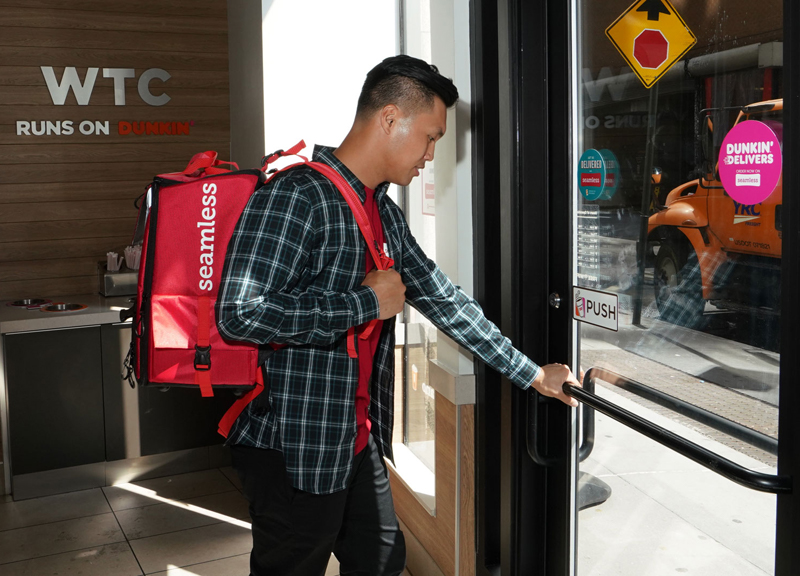When a big brand jumps into delivery, there’s a big decision to make: Do you open the brand to every delivery provider possible to meet the delivery consumer everywhere or forge a deeper partnership with a single partner? For Dunkin’ Brands, the answer was a close partnership with Grubhub to push their delivery efforts further. The reason was all about efficiency and deep integration so that delivery orders were seamless for customers and staff in the brand’s 7,500+ locations across the U.S.
“We decided to get into a deep relationship with Grubhub because they were very technology driven,” said Stephanie Meltzer-Paul, vice president overseeing marketing and customer engagement at Dunkin’. “Secondly, they match up very well with our footprint. Right now their coverage is a little over 70 percent of our system.”
The last part is key for a lot of big brand partnerships, a strong partner is great, but if can’t deliver across the system, then there is significant wasted national advertising spend.
Plugging delivery orders directly into the Dunkin’ point of sale and data pipeline so the company can track and analyze each order without looking at a disparate system was a chief goal of the deal.
“We wanted to make sure we didn’t add another piece of equipment for franchisees to manage, but also important was that the sales to come in through the POS so they can directly track delivery sales, they can see the complete picture,” said Meltzer-Paul. “Us and our franchisees are very pleased.”
Speed of service has been a major component of the early technology work and also the ongoing rollout. With order times in the drive thru of less than three minutes and near that at the counter, speed of delivery was a big part of the discussion. Meltzer-Paul said the goal is 15 minutes from store to customer–much faster than the typical 30-40 minutes seen in Food On Demand research. That meant the POS integration was especially important so the driver experienced just-in-time ordering. That’s great for the driver because there’s no downtime, and they’re not standing long in the small-format New York locations.
“The ideal state is just as the order is being put on the counter is when the driver walks in that’s what we’re diving for,” said Meltzer-Paul. “It’s working very, very well.”
Dunkin’ launched in New York in mid June with rollout planned through the next couple years. The exact speed of that will depend on market-by-market testing and tweaking. She said Dunkin’ didn’t want to simply flick the switch and turn on delivery across the country. When the algorithm that tracks the driver sees one a mile away, for example, that could be two minutes in a smaller market or, you know, four hours in Atlanta traffic.
“We started in New York then expanded a few alpha tests to Boston and Philadelphia, said Meltzer-Paul. “We spent a lot of time in pilot testing that algorithm with Grubhub and getting a lot of feedback from the franchisees. When we felt we had it just right, we decided to scale in New York. We basically have to go through that same testing in every city.”
Grubhub made all the POS connections and worked through the algorithm testing with the brand, she said, another reason Dunkin’ opted for a close partnership to start delivery versus a multi-source approach.
So far, everything is working great in New York and other test markets. Digital delivery orders are more than twice the size of typical order and it has helped the brand keep orders flowing through the day.
“That’s been great. It is spreading out orders across the day part, which our franchisees love, people in the afternoon want some caffeine delivered at work or on the weekend when people want to sleep in and get Dunkin’ delivered,” said Meltzer-Paul. “We got a lot of great feedback during the pilot things that were very going well things we had to tweak, we had some very vocal franchisees, and they’re thrilled.”




